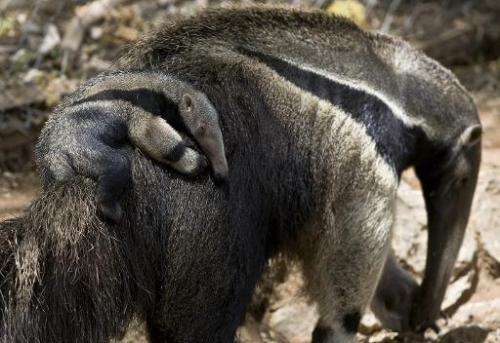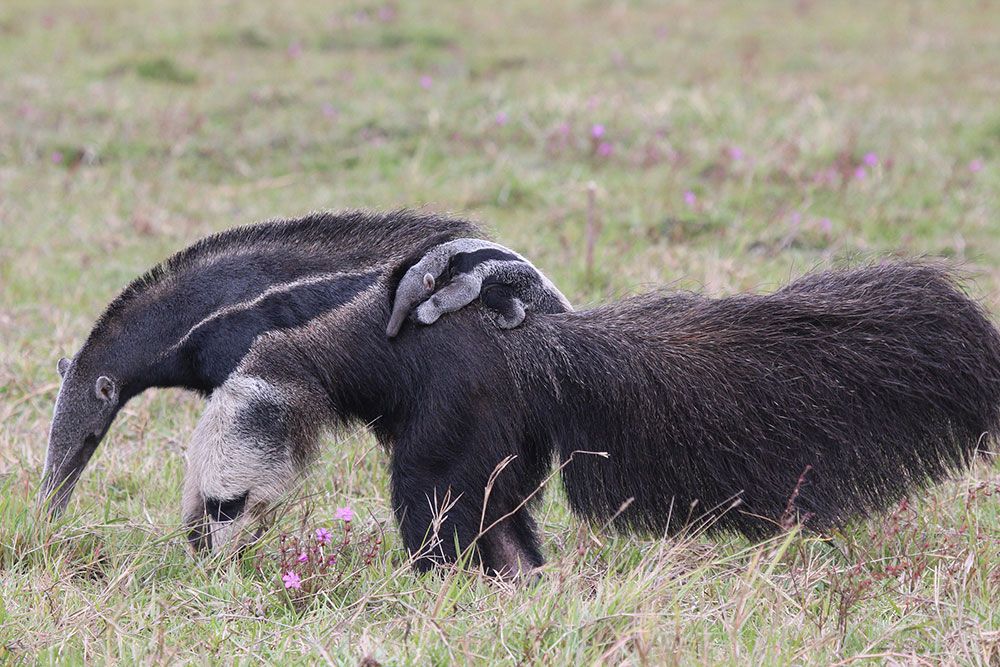A is for Anteater
Anteater is a common name for the four extant mammal species of the suborder Vermilingua[1] (meaning "worm tongue") commonly known for eating ants and termites.[2] The individual species have other names in English and other languages. Together with the sloths, they are within the order Pilosa. The name "anteater" is also colloquially applied to the unrelated aardvark, numbat, echidnas, pangolins and some members of the Oecobiidae.
Extant species are the giant anteater Myrmecophaga tridactyla, about 1.8 m (5 ft 11 in) long including the tail; the silky anteater Cyclopes didactylus, about 35 cm (14 in) long; the southern tamandua or collared anteater Tamandua tetradactyla, about 1.2 m (3 ft 11 in) long; and the northern tamandua Tamandua mexicana of similar dimensions. The biggest anteater is the giant anteater. Anteaters are edentate animals—they have no teeth. But their long tongues are more than sufficient to lap up the 35,000 ants and termites they swallow whole each day. As the largest of all four anteater species, the giant anteater can reach eight feet long from the tip of its snout to the end of its tail. It is covered in grayish brown fur with white front legs, black stripes running from its chest to its back, and a bushy tail.

Sources:
https://ptes.org/grants/worldwide-projects/giant-anteater-brazil/
So if we have ants in the house, is it a good idea to keep ant eaters as pets?
ReplyDelete